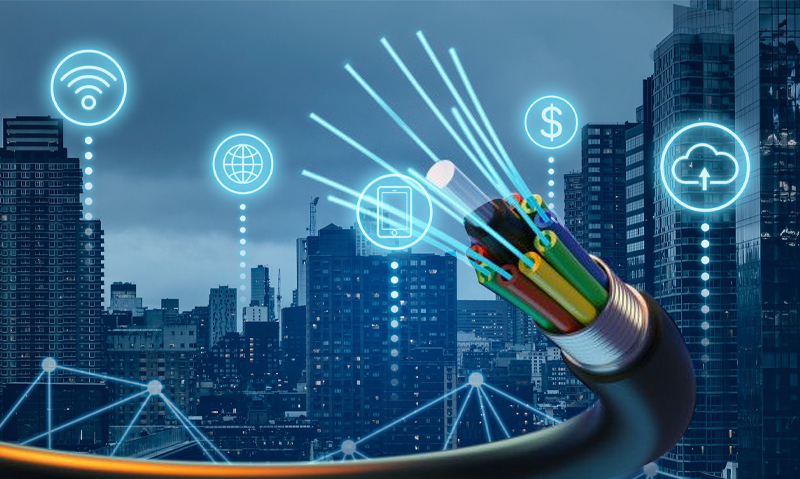The impact of 5G on Fiber Network planning in major US cities

The introduction of 5G technology has transformed wireless connectivity, as it has the potential to provide ultra-fast speeds, minimal latency, and extensive IoT integration. But what a lot of people don’t know is that fiber optic networks are really important for 5G to work. As 5G becomes more popular in US cities, fiber network planning has changed a lot to make room for this new wireless technology.
The journey of 5G integration in US cities began with trials and initial commercial deployments around late 2018 and early 2019. Operators like Verizon, AT&T, and T-Mobile were among the first to launch services in select markets, initially focusing on fixed wireless access– essentially using 5G to deliver high-speed internet to homes and businesses without the need for traditional wired connections. This early phase often leveraged millimeter-wave (mmWave) spectrum, which offered incredible speeds but had a limited range and struggled with obstructions like buildings.
Why 5G Demands a Fiber Centric Approach
5G is not just a wireless upgrade—it’s a fiber-dependent ecosystem. Here’s why telecom operators must prioritize fiber expansion:
> Small Cell Backhaul Requirements – 5G relies on densely deployed small cells, each needing fiber backhaul to deliver gigabit speeds and <10ms latency.
> Enhanced Mobile Broadband (eMBB) & Massive IoT – Applications like 4K video streaming, smart cities, and industrial IoT require fiber’s high throughput and reliability.
> Edge Computing Integration – To support real time processing, telecom providers must deploy fiber-fed edge data centers closer to users.
Key Impacts on Telecom Fiber Network Planning
Accelerated Fiber Densification in Urban Areas
Major cities (NYC, LA, Chicago, Dallas) are seeing unprecedented fiber deployments to support 5G small cells. Telecom companies are leveraging:
✔ Micro-trenching – Faster, cost-effective fiber laying in dense metro areas.
✔ Aerial Fiber on Utility Poles- Quicker deployment where underground options are limited.
✔ Dark Fiber Leasing- Monetizing existing fiber assets while expanding networks.
Public-Private Partnerships (PPPs) Streamlining Deployments
Municipalities are collaborating with telecom providers to expedite permits and reduce regulatory hurdles.
The Future of Fiber: What’s next for Telecom?
As 5G adoption grows, telecom operators must focus on:
FTTH & 5G Convergence Bundling services for residential and business customers.
Edge Data Centers – Expanding fiber-fed edge computing to reduce latency.
6G Preparations – Future-proofing fiber networks for even higher capacity demands.
AI-Driven Network Optimization- Using predictive analytics to plan fiber routes efficiently.
The rollout of 5G is pushing cities to overhaul their digital infrastructure strategies. It’s not just about enabling 5G it’s about building a future ready foundation for everything that comes next, from smart transportation to AI-driven city services. Getting fiber planning right now is critical. Cities that move early and partner with experienced design firms like Sven Carto, a leading provider of telecom fiber engineering design services in the USA, will be positioned to lead the next wave of innovation. Those that delay risk falling behind in an increasingly connected and competitive landscape.